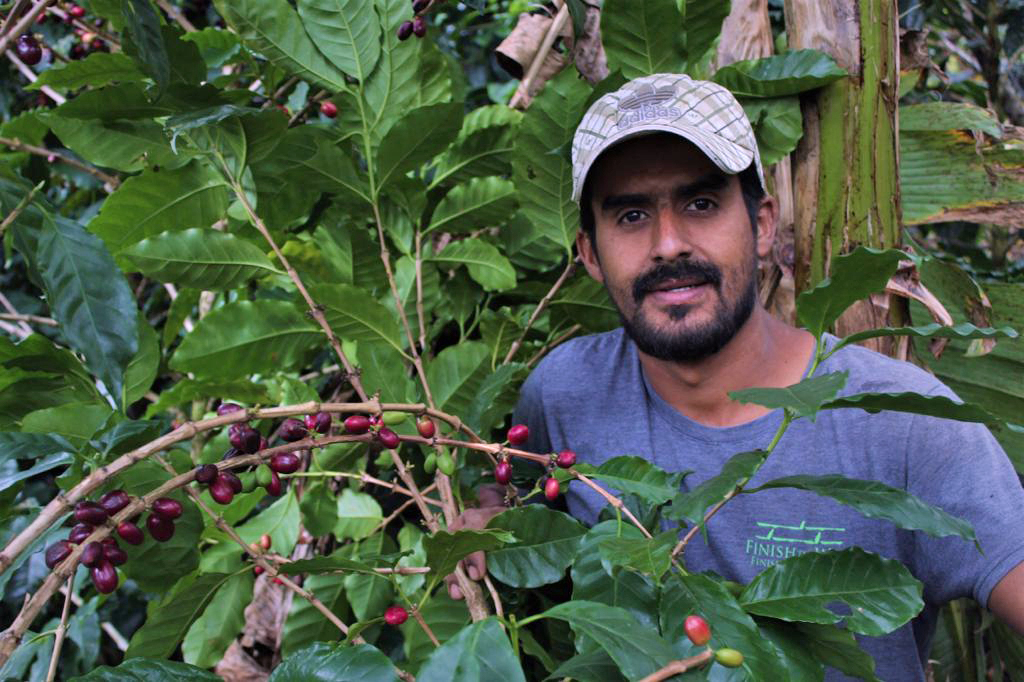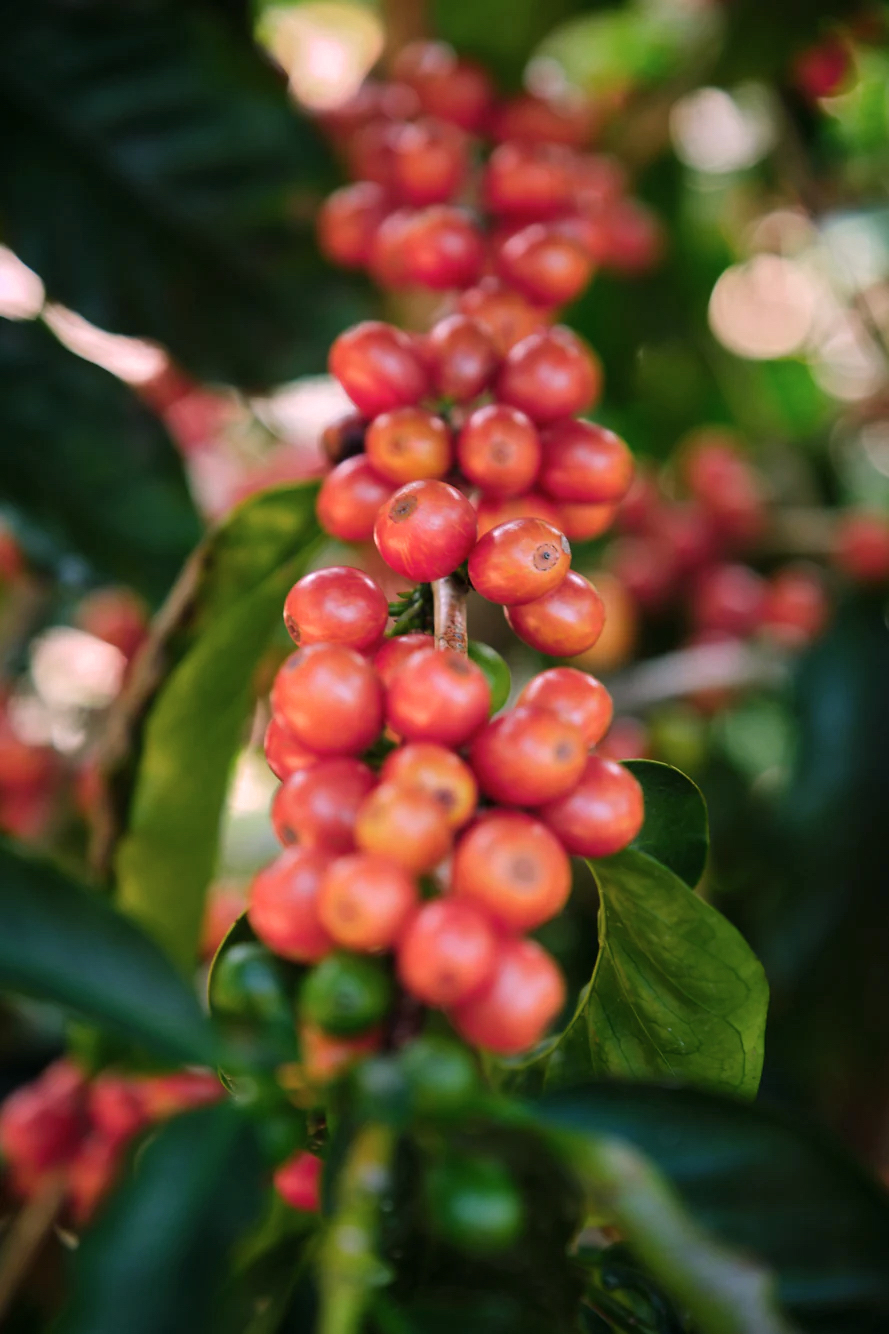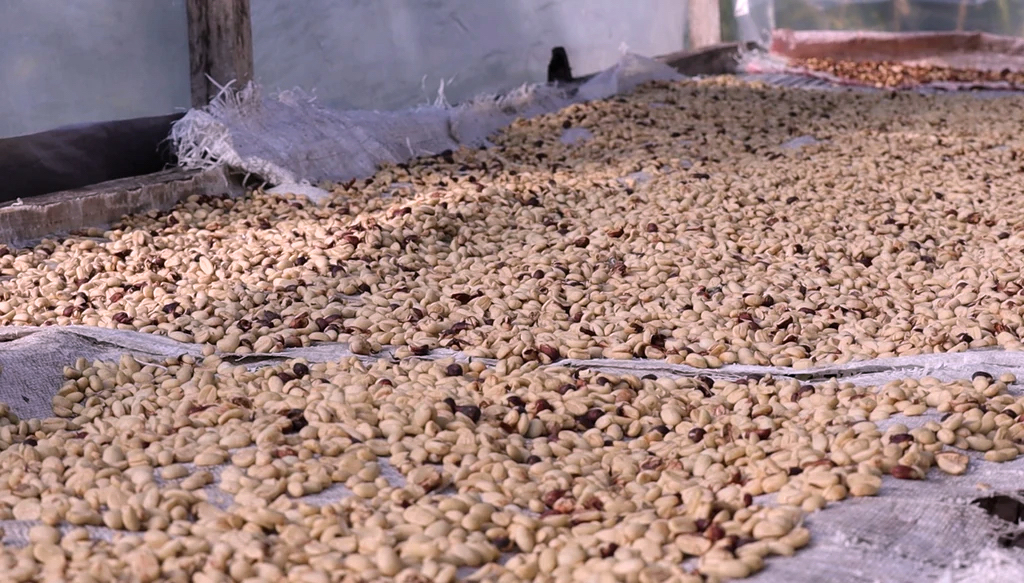








Honduras
Cup Notes: Orange, Pineapple, Brown Sugar, Almonds
Discover our new washed Honduran coffee, perfect for any time of day. With a complex and fruity flavour profile, it offers a lively acidity that bursts on the palate. Ideal for pour-over or espresso, in the latter it highlights its bright acidity, complemented by a smooth and rich body.
Suggested for espresso and filter
when we roast
We freshly roast to order all coffees on Monday, Wednesday and Friday (excluding national holidays), and ship the same day! Cut-off time is 11:59pm (UTC+1) of the day before the roast day. *We only ship whole beans*
At just 16, Nahun Fernández Sabillón took over his father’s 20-year-old coffee farm in Las Flores, Santa Bárbara, Honduras, located at 1,600 masl—a two-hour walk from home. Through hard work and saving, he soon acquired his own 2-hectare plot nearby. In 2007, the local mill San Vicente recognised his coffee’s quality, and that same year he placed in the Top 20 of the Honduras Cup of Excellence. Today, Finca El Primo spans 10 hectares, managed with the help of his father and brothers, who share wet-milling and drying facilities—an essential part of their success in specialty coffee.
The farm employs seven permanent workers and up to 20 pickers during harvest. This lot includes Catuai, Parainema, and Bourbon, while other areas feature Pacas, San Ramón, Geisha, Bourbon Rosado, Caturra, Typica, and Sidra. Nahun uses both organic materials—gallinaza and coffee pulp—and chemical fertilisers like calcium nitrate, Kmag, zinc sulphate, and 12-24-12. His Honey and Washed processes involve meticulous cherry selection, controlled fermentation, and drying on raised beds. Afterward, coffee is stored on-site before transfer to Exportadora de Café San Vicente.
A lagoon manages wastewater, and pest issues are rare due to altitude, though fungicides are regularly applied for disease prevention. Besides coffee, Nahun also grows bananas, peaches, and plums, though changing rainfall patterns and diseases like ‘ojo de gallo’ have made harvest and drying more difficult.

BOURBON
Bourbon is one of the most culturally and genetically important Coffea arabica varieties in the world, known for excellent cup quality at the highest altitudes.
It is one of the two main cultivars, along with Typica, from which many other varieties have been bred. Historical records indicate that Bourbon was taken from the coffee forests of Southwestern Ethiopia to Yemen, where it was first cultivated; recent genetic studies have confirmed this origin.
The variety was later introduced to Réunion, formerly known as Bourbon Island before 1789, and from there brought by the French to mainland Africa and Latin America. Bourbon grows best at elevations between 1,100 and 2,000 masl and typically yields 20–30% more than Typica.
It has a commercially viable level of production and a suitable growth habit but is generally susceptible to diseases and pests, including coffee leaf rust, as noted by World Coffee Research.
In the early 1900s, Bourbon arrived in Honduras, where it is now commonly grown in high-altitude regions such as Copán, Marcala-Montecillos, and Agalta. It produces medium-sized beans and is highly regarded among specialty coffee producers for its potential to deliver high-quality cups.

Washed coffees highlight the true character of the bean by emphasizing what’s inside, not the exterior. Their quality depends on factors like the varietal, soil, climate, ripeness, fermentation, washing, and drying—all crucial in determining the final flavour. The washed process involves removing the pulp (exocarp and part of mesocarp) mechanically, leaving behind the sticky mucilage. This mucilage is then removed through fermentation or mechanical scrubbing, followed by washing or direct drying on beds.
In the case of this coffee, the farmer uses a combination of organic materials—such as chicken manure and coffee pulp—and chemical fertilizers, including calcium nitrate, K-Mag (a potassium-magnesium sulfate), zinc sulfate, and 12-24-12 NPK. Two distinct post-harvest methods are applied: Honey and Washed, both of which involve meticulous selection, controlled fermentation, and systematic drying on raised beds to ensure optimal quality and flavour clarity.
